Degradation of Xenobiotics by Halomicrobium mukohataei (Megan Reilly)
Importance of halophiles for the use of biodegradation of pollutants
- Saline environments
- 5% of industrial effluents are saline
- organic/aromatic compounds
KEGG pathways that I have found viable genes for in the H. mukohataei genome:
- Benzoate degradation via hydroxylation
- Styrene degradation
- Caprolactam degradation
Possibly others, but either the gaps in other pathways are due to H. mukohataei possessing an alternate gene rather than one that is already known to exist in other genomes, or that a gene has not been identified in any genomes at all and requires wet-lab experiments to determine the sequence of the gene. These unknown genes must exist in several organisms, because the protein that they produce has been identified.
Contents
Benzoate degradation via hydroxylation
Benzoate has several chemical conformations (binds to many other substances), and is often used as a pesticide. It can be carcinogenic to humans, cause reproductive and developmental toxicity, and neural damage. Most forms of benzoate can be dissolved in aqueous solutions - polluting aquatic ecosystems. In salt lakes, salt marshes, or other areas with high salinity, halophiles may be an effective treatment against benzoate spills, emmissions, and agricultural runoff.
Click here to see the KEGG Pathway
Gene 1.14.12.10 - Rieske (2Fe-2S) domain-containing protein:
(BLAST of H. marismortui; sequence of both microbes obtained from RAST.)
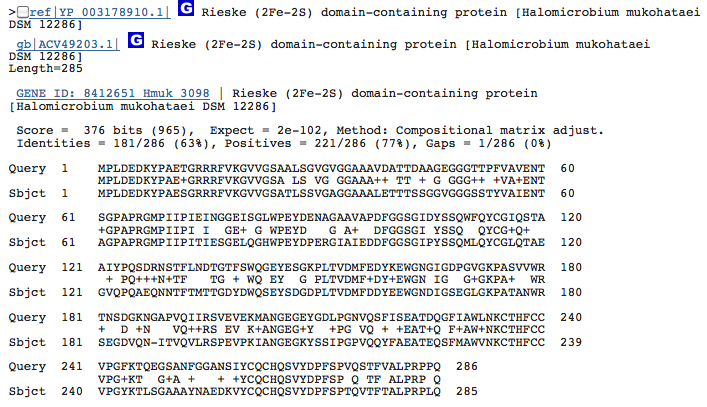
Gene 1.3.1.25 - putatative dehydrogenase
(BLAST of H. marismortui; sequence of both microbes obtained from RAST.)
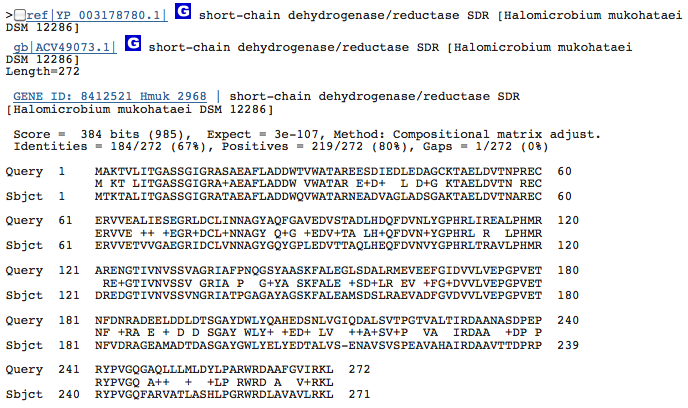
Gene 1.13.11.1 - putatative dioxygenase
(BLAST of H. marismortui; sequence of both microbes obtained from RAST.)
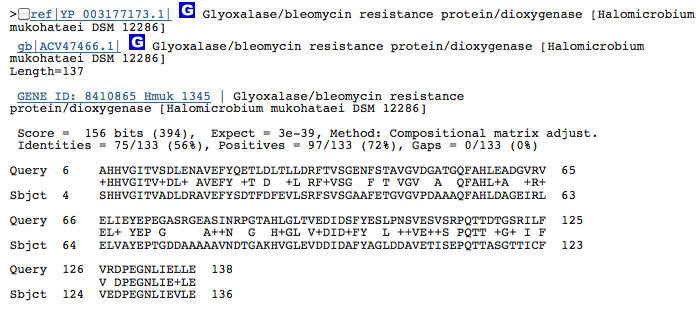
Gene 5.5.1.1 - muconate lactonizing protein
(BLAST of H. marismortui; sequence obtained from BRENDA.)
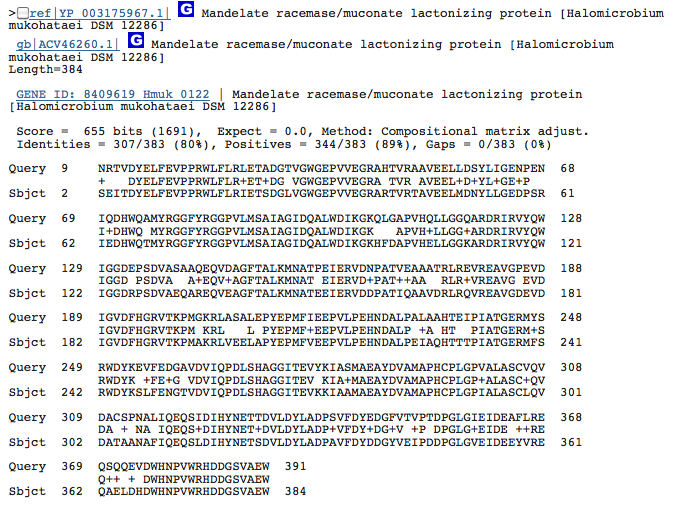
Gene 5.3.3.4 - putatative muconolactone D-isomerase
(BLAST of H. marismortui; sequences obtained from RAST.)
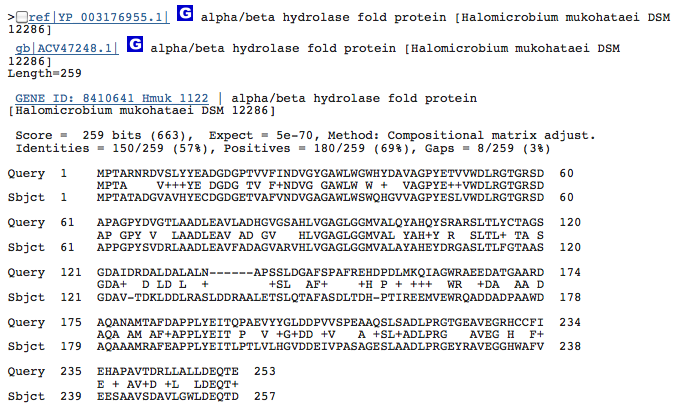
Gene 3.1.1.24 - predicted hydrolase or acyltransferase of alpha/beta superfamily
(Gene obtained from JGI, verified with BLAST.)
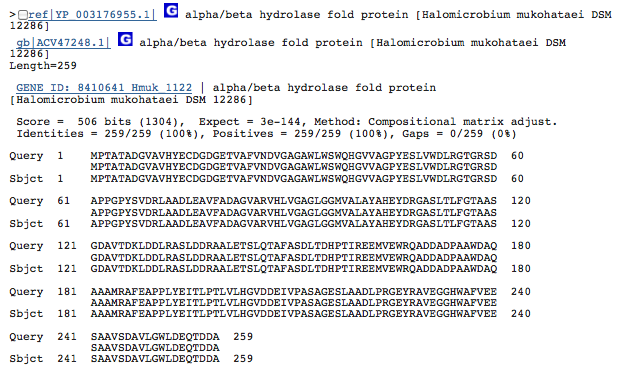
Gene 2.8.3.6 - carboxyl transferase
(BLAST of H. borinquense; sequences obtained from RAST.)
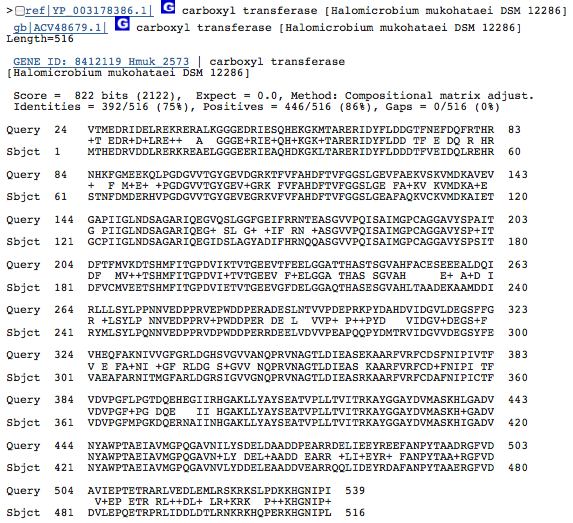
Gene 2.83.1.16 - acetyl CoA transferase
(Gene obtained from JGI, verified with BLAST.)
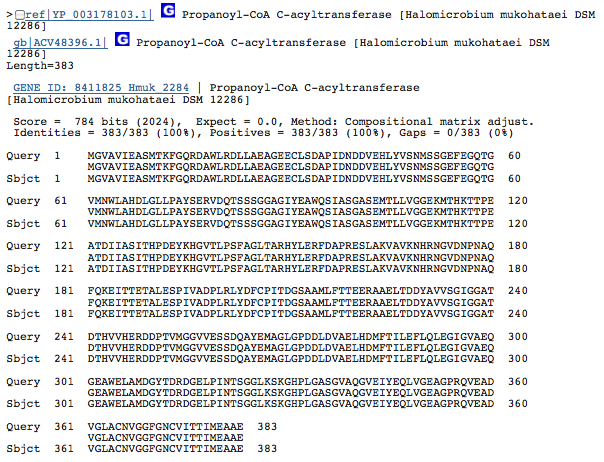
Styrene degradation
Styrene is an aromatic hydrocarbon that is an oily liquid at room temperature. It is toxic in high or prolonged doses and can cause cancers, gastrointestinal, kidney, and respiratory health effects. It has a sweet smell, and is thus more attractive to inhalation or ingestion by wildlife. Large quantities of styrene are used to manufacture 'polystyrene,'a useful industrial plastic. Styrene is also used to manufacture synthetic rubber, fiberglass, and food packaging. Most of the styrene released into the environment comes from these industries.
Click here to see the KEGG pathway.
Gene 1.13.11._ - aromatic compound dioxygenase:
(BLAST of H. marismortui compared to that of H. mukohataei. This gene is either not very well characterized or not conserved in archaea, as seen by the variation in predicted genes on JGI.)

Gene 1.3.1.19 - putative dehydrogenase:
(BLAST of H. utahensis compared to that of H. mukohataei. This gene is not well characterized in archaea - the sequence of Pseudomonas putida was obtained from BRENDA.)
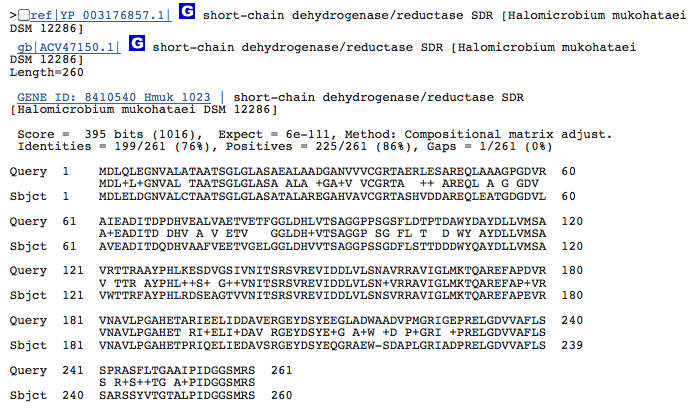
Gene 1.13.11.2 - catechol dioxygenase:
(BLAST of the gene of H. mukohataei obtained from RAST.
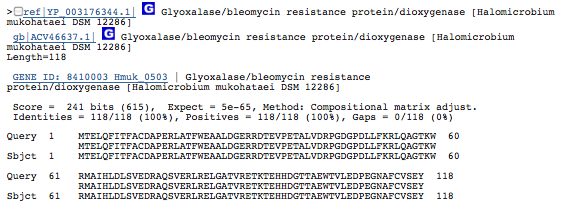
Gene 3.7.1.9 - hydroxymuconate:
(BLAST of the gene of Halogeometricium borinquese. Sequence obtained from RAST.
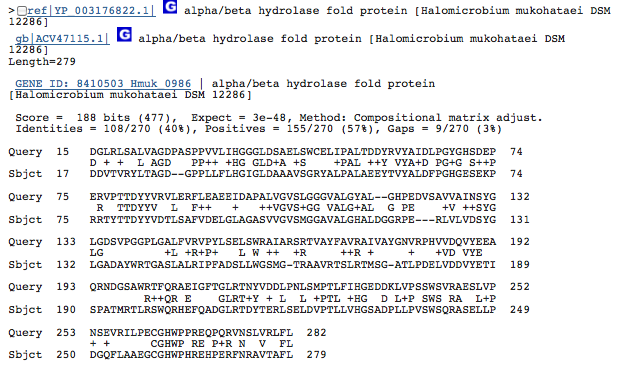
Gene 4.2.1.80 - hydratase:
Still investigating this gene in halophiles.
Gene 4.1.3.39 - pyruvate carboxyltransferase:
(BLAST of the known gene of Pseudoalteromonas haloplanktis.
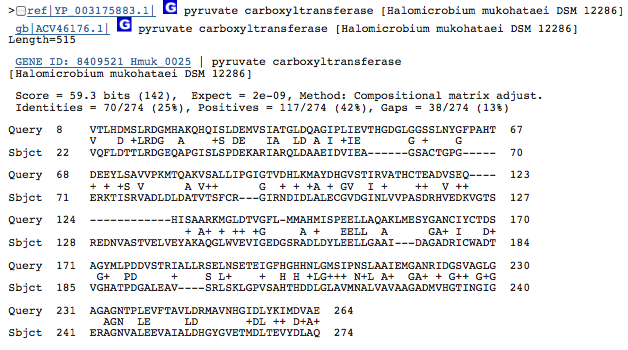
Caprolactam degradation
Click here to see the KEGG pathway.
I'm still investigating these genes in halophiles...cyclohexane may be another important intermediate organic pollutant found in this pathway.
Other potential biodegradable xenobiotics
Benzene, a low molecular weight petroleum hydrocarbon, has been shown to be utilized by an unnamed halophile as its sole source of energy. This organism was also able to degrade toluene, another aromatic hydrocarbon.Fathepure 2006
Phenol is a toxic, aromatic, white crystalline solid. It has been shown to be used as a carbon and an energy source by Halobacillus campisalis.Peyton 2003